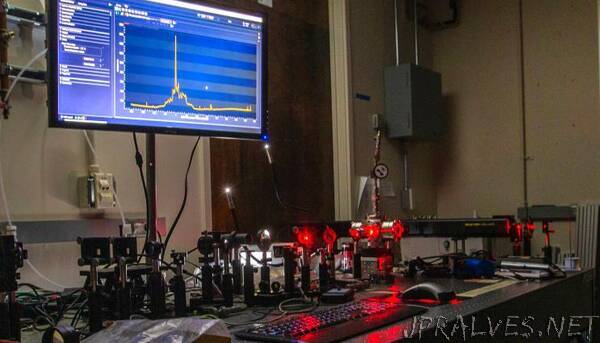
“A team of researchers from Lawrence Livermore National Laboratory (LLNL) and the University of Michigan has found that the rate of cooling in reactions dramatically affects the type of uranium molecules that form.
The team’s experimental work, conducted over about a year-and-a-half starting in October 2020, attempts to help understand what uranium compounds might form in the environment after a nuclear event. It has recently been detailed in Scientific Reports, a Nature-affiliated publication.
“One of our most important findings was learning that the rate of cooling affects the behavior of uranium,” said Mark Burton, the paper’s lead author and a chemist in the Lab’s Materials Science Division. “The big picture here is that we want to understand uranium chemistry in energetic environments.”
In their experiments, the LLNL and Michigan researchers found that the rate of cooling — as well as the amount of oxygen — dramatically affect how uranium combines with oxygen.
The recent experiments showed that as uranium cools from a plasma at about 10,000 degrees Celsius in microseconds (millionths of a second), the chemistry is drastically different when compared to cooling over milliseconds (thousandths of a second).
Earlier LLNL experiments in 2020, led by mechanical engineer Batikan Koroglu, provided the first experimental evidence for the phenomena that the amount of oxygen that combines with uranium can affect which uranium molecules form. Those findings were substantiated in the recent LLNL-Michigan experiments.
The most recent work, performed under a Laboratory Directed Research and Development (LDRD) strategic initiative, seeks to understand the effect of the local environment on the physics and chemistry of nuclear explosions, particularly to aid computational modeling efforts.
“The electron structures of actinides, such as uranium and plutonium, are extremely complex and difficult to computationally model,” said Kim Knight, a co-author of the study and the leader of the LDRD strategic initiative.
“Experiments like this one can provide data and insight on the generalized behavior of these actinides, something that aids our computational modeling.”
Uranium and oxygen can combine to form hundreds of different molecules, depending on the oxygen concentration and the cooling rates; each of these species can have different and distinct chemical behaviors.
“When uranium comes into contact with oxygen, it will form different molecules. The rate of cooling also affects the type of molecules that form. We care about what specific molecules are formed as a result,” Burton explained.
For their experiments, the team used a 6-inch-by-6-inch benchtop reaction chamber that was developed by three of the group’s researchers: Burton, Jonathan Crowhurst and David Weisz.
They fired a 50-millijoule laser pulse to ablate part of a square-centimeter uranium metal target, using in-situ infrared spectroscopy for diagnostics.
“The development of such a small-footprint, well-controlled and reproducible experiment allows our scientists to work with extra small amounts of the uranium. This unique, innovative benchtop approach provides very high-quality data for the science we are trying to do,” said Crowhurst, who is a physicist.
Different properties of uranium have affected researchers’ interpretations of historic events and could influence their ability to understand future events.
“These experiments improve our understanding of gas-phase chemical reactions between uranium and oxygen as hot plasmas cool, which can inform models of nuclear explosions to refine our predicative capabilities of particle formation and transport,” Knight said.
“The fate of uranium in the environment is important for predicting the impact of events like nuclear weapons or nuclear accidents in different environments. One of the applications is to aid in the interpretation of events for nuclear forensics,” she added.
In addition to Burton, Crowhurst, Knight, Koroglu and Weisz, other co-authors of the papers are: Harry Radousky, a physicist in LLNL’s Materials Science Division; Peter Boone, an analytical chemist in the Lab’s Nuclear and Chemical Sciences Division; Lauren Finney, a former graduate student at the University of Michigan who worked as a visiting scientist at LLNL; and Igor Jovanovic, a professor of nuclear engineering and radiological sciences at the University of Michigan.”
